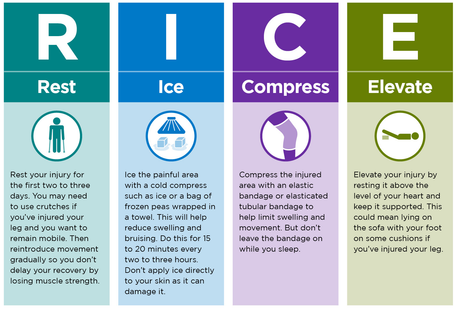Injuries and health management

Food and drink
During most training sessions, and certainly those over one hour's duration, children are working hard, they need to replace fluids so they do not get dehydrated and fatigued. Try to make sure your children have drink bottle with them on gym days. Drink bottles must be clearly named. Plain water is best of all and easily replaced if they run out.
Healthy snacks before class are recommended preferably half an hour or more beforehand to keep energy levels up. A healthy snack or a meal shortly after a training session is recommended especially if the class is for more than an hour.
For competitions, ideally children should have a meal or sizeable snack about one to two hours before, plenty of drink for during the competition, and a solid snack, e.g. filled roll, yoghurt, or fruit to eat immediately afterwards whether it is meal time or not.
Injuries
If your children injure themselves playing sport - do not blame the sport. Everyone gets the odd bumps and bruises whatever they are doing. Overall, we have more people in plaster from doing other things than from injuries in the gym. We take as much care as we can to keep the gymnasts uninjured, but still there are sometimes mishaps.
Injury prevention
Good warm ups, warm downs and conditioning help to keep injuries to a minimum. So, try to make sure your children are not late to class or competitions so that they have time to warm up properly.
Please tell your gymnasts coach before class if they have any injuries so that their training program can be adjusted accordingly so they do not aggravate an existing injury.
Rips
Rips on the palm of the hand from the bars can be very painful. We recommend gymnasts from Step 3 wear hand guards as they spend increasing amount of time on the bars - check out our uniform sub tab for the best place to purchase these!
If the skin is torn, we recommend the skin flap be carefully cut away, the area cleaned carefully and the rip can be covered with a cotton ball and strapped up with brown strapping tape until it is healed.
Other remedies you can try:
- Place a wet tea bag on the rip and bandage with a crepe bandage overnight - the tanin in the tea bag can help to toughen up the skin.
- Paw paw ointment is very soothing and healing

Soft tissue injury
If a soft tissue injury occurs we will apply ice and then apply compression bandage, and elevate the damaged part to reduce internal bleeding and swelling. The ice should be kept on for approximately 20 minutes and then taken off and the bandage reapplied. This procedure should be repeated every two hours for the first twenty-four hours (not while sleeping of course), and every four hours for the next day, and less often the following day. This initial treatment for fairly serious bumps and strains is very important. It can reduce healing time dramatically, and healing takes place with less scar tissue, which limits movement. It is best to keep off the injury for this time but be guided by pain. If it doesn't hurt to move or use it a little, use it. Movement is good, in moderation, but still keep it rested and elevated between exercise sessions.
Keep an ice pack handy at home if possible. Cold running water is better than nothing, especially in Dunedin in the winter.
If your child is sent home bandaged please return our bandages as soon as possible. Someone else may need it.
Ice massagers can be made in plastic cups or yoghurt containers. Pain from a chronic injury which flares up after exercise can be relieved this way.
If you want more details, just ask Mrs. Broad.
Serious Injuries
If there is a suspected fracture or other serious injury, parents will be notified, and parents may either collect the child themselves for hospital referral, or we will arrange to get them to hospital as soon as possible, by ambulance if necessary. The parents can then meet us there.
injury rehabilitation
Encourage your child to keep involved. As soon as possible, get them back into the gym. They don't need to be able to take part, but they will feel better if they can be with their friends as usual. They can sit with them, look after their cards or notebooks, time exercises, help coaches etc., and still feel that they belong. If they are there we can talk to them, check their progress and show we care and have not forgotten about them. Sometimes they can do a little conditioning, or stretching or something which will not aggravate their injury so they keep as much as possible in training. The things they are able to do may really be improved and they won't need to spend time on them later when trying to catch up on other things they could not do while injured.
